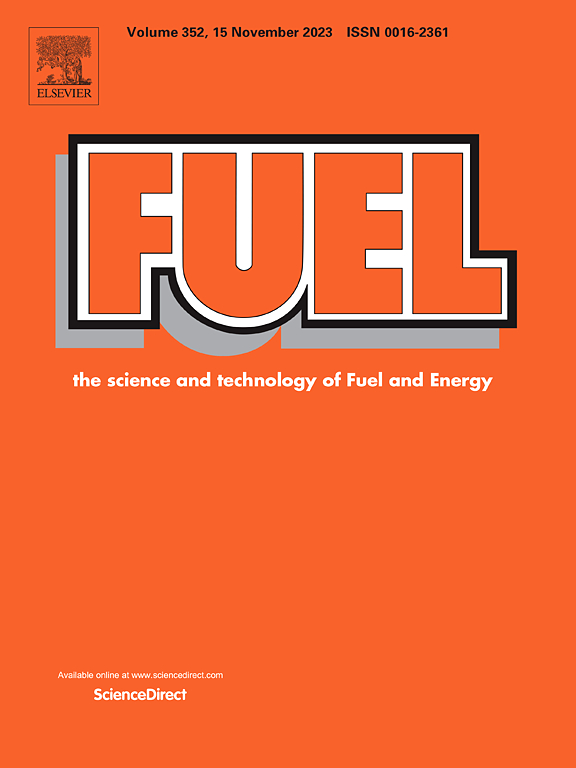Study on flame evolution and kinetics mechanism of H2-Air mixture with C3H9O3P-H2O fog addition
IF 6.7
1区 工程技术
Q2 ENERGY & FUELS
引用次数: 0
Abstract
Understanding the hydrogen explosion characteristics with inhibitors addition is indispensable for ensuring the safe application of hydrogen fuels. Influences of C3H9O3P-H2O fog addition on flame evolution and kinetics mechanism of hydrogen-air explosions is investigated with 3.4 L rectangular chamber and reaction kinetics model. The results demonstrate that the C3H9O3P-H2O fog promotes thermal-diffusion instability of the flame, resulting in the formation of cellular structures on the flame front. And the fog suppresses the formation of tulip flames and form a corrugated flame. Additionally, as the equivalence ratio increases, the attenuation effect of the C3H9O3P-H2O fog on explosion overpressure gradually decreases. The order of effectiveness in explosion overpressure reduction with fog addition position is P3 > P2 > P1. The influence of the C3H9O3P-H2O fog on hydrogen explosion overpressure is a coupled effect, involving both the expansion of flame surface area (Enhancement factor Fe∈ (1, +∞)) and the reduction of laminar burning velocity (Inhibition factor Fi∈ (0, 0.24)). From chemical kinetics perspective, C3H9O3P-H2O fog reacted and significantly consumed H, O, and OH radicals, with the consumption rate of radicals reaching at least 83 %. The main phosphorus-containing radicals, PO2, HOPO, and HOPO2, contributed to radical consumption through chain termination reactions (R12 ∼ R18), continuously consuming H, O, and OH radicals by forming stable compounds such as H2O and H2.
求助全文
约1分钟内获得全文
求助全文
来源期刊

Fuel
工程技术-工程:化工
CiteScore
12.80
自引率
20.30%
发文量
3506
审稿时长
64 days
期刊介绍:
The exploration of energy sources remains a critical matter of study. For the past nine decades, fuel has consistently held the forefront in primary research efforts within the field of energy science. This area of investigation encompasses a wide range of subjects, with a particular emphasis on emerging concerns like environmental factors and pollution.
 求助内容:
求助内容: 应助结果提醒方式:
应助结果提醒方式:


